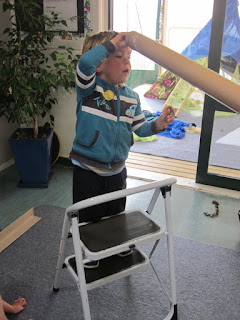Following on from the interests of one of our children, last week we introduced ‘leaf rubbings’ to Kindergarten. Over the last few weeks we have talked a great deal about autumn - the falling leaves and how leaves change colour - so this came quite naturally as the next step.
Leaf rubbings can be quite a tricky process. First you have to place some paper over the underside of a leaf, hold your paper very still (or even better get a friend to lend a helping hand), then using the broad side of a wax crayon or pastel, rub firmly but slowly.
The children have showed a real interest in the leaf rubbings, choosing to re-visit this experience again and again. Each time they marvel at the patterns, lines and shapes that are produced.
The leaf rubbings have even extended into our Friday ‘Nature programme’ where the children took some time out to complete a few rubbings in the bush.
Many of the children have been totally captivated by the transformation of the paper as they engage in their rubbings:
Aimee, “Look, it’s coming alive”
Katie, “Are we using magic pastels?”
“Rubbings offer a wonderful way to see details in everyday things that are often overlooked.” (Kolbe, 2007)
We decided to go one step further, cutting out our rubbings and using dye in hues of yellow, orange, red and green to transform our rubbings into beautiful life-like leaves. Some of them looked so similar to the real leaf it was extremely hard to tell the difference!
“Making rubbings: a chance to marvel at details and patterns”
(Kolbe, 2007)
Blending together art, science and nature.
The children gain an awareness of the different types of leaves and their characteristics, for instance texture, colour and shape.
Christine



















































